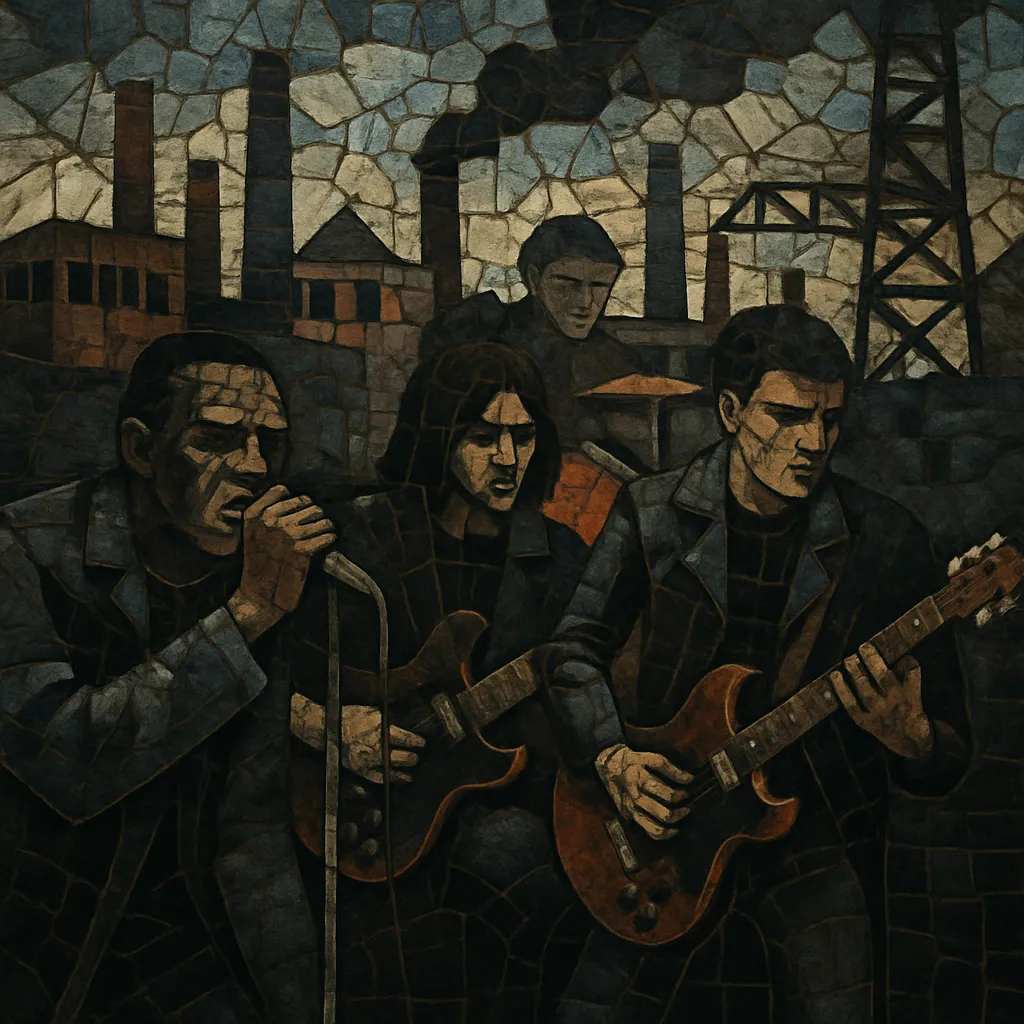
The Birmingham sound (often called Birmingham techno) is a stark, loop-driven strain of UK techno that emerged in the early-to-mid 1990s. It privileges relentless rhythm, industrial textures, and austere repetition over melody or harmonic development.
Built for heavy club systems, its hallmarks include hard, dry 4/4 kick drums, metallic percussion, gritty saturation, and sparse, functional arrangements that evolve through subtle filtering and modulation rather than big breakdowns. The aesthetic is mechanical, hypnotic, and utilitarian—techno reduced to its toughest, most essential parts.
The Birmingham sound coalesced around the Downwards label, founded by Regis (Karl O’Connor) and Female (Peter Sutton) in Birmingham in 1993, and the long-running club night House of God. Surgeon (Anthony Child) debuted on Downwards in 1994, establishing a blueprint of dry, pounding rhythms and looped, industrially tinged textures. Influences drew from Detroit/Chicago techno’s rigor, UK industrial and EBM’s harsh timbres, and post-punk’s stark minimalism.
Throughout the late 1990s, Downwards releases by Regis, Female, Portion Reform, and Surgeon refined a sound that was at once minimal and punishing. Surgeon’s albums for Tresor (e.g., Basictonalvocabulary, 1997) helped project the Birmingham aesthetic internationally, while House of God cemented its reputation as a crucible for uncompromising techno.
In the 2000s, Regis and Surgeon formed British Murder Boys, pushing the style toward even more visceral, noise-scorched territory. Sandwell District (with Regis, among others) exported the sensibility to a global audience, connecting Birmingham’s hard minimalism with Berlin’s emergent techno infrastructure and shaping a new, darker industrial-leaning wave.
By the 2010s, the Birmingham sound was widely acknowledged as foundational to modern industrial techno and a touchstone for hard, loop-based club tools. Its minimalist severity, focus on texture and propulsion, and DJ-functional arrangements influenced generations of producers and the broader aesthetics of peak-time, warehouse-oriented techno.

